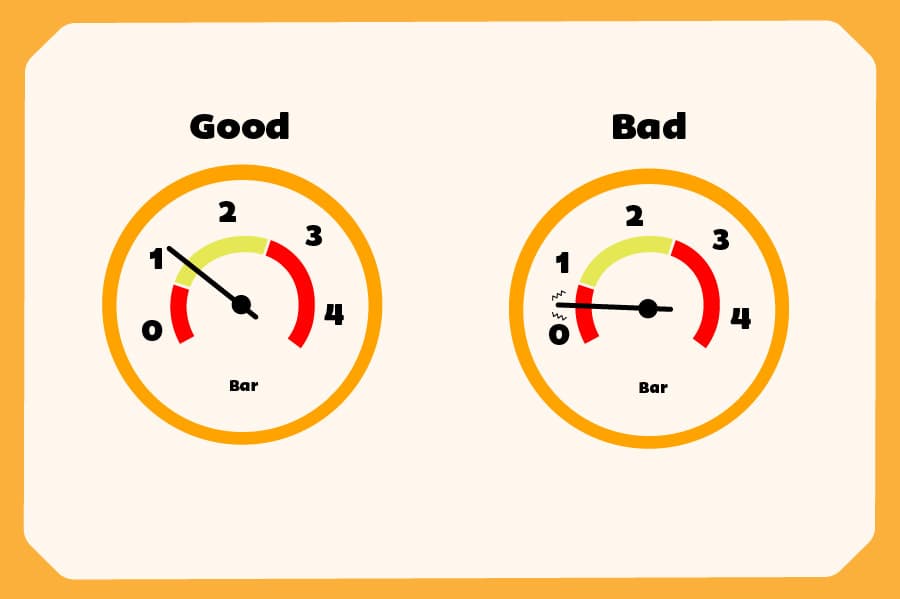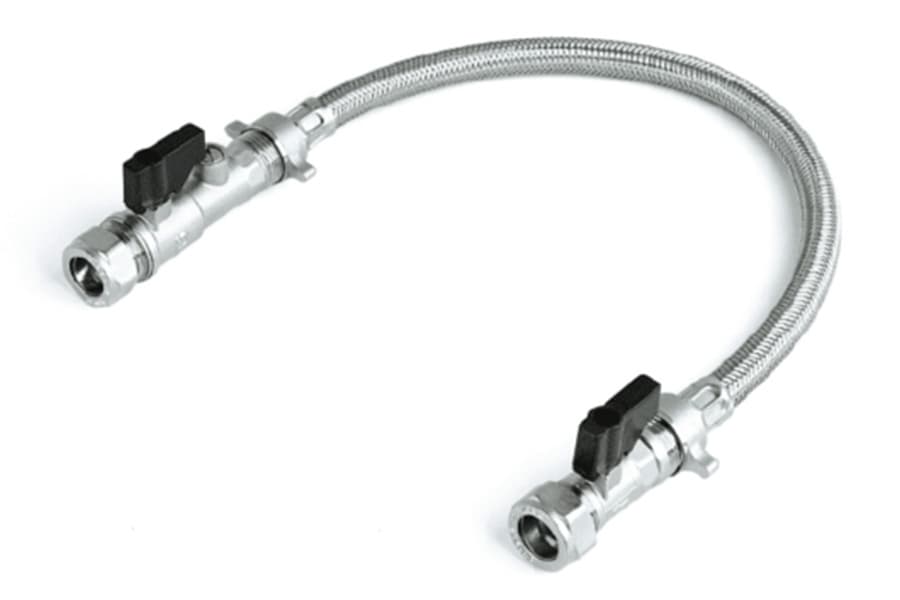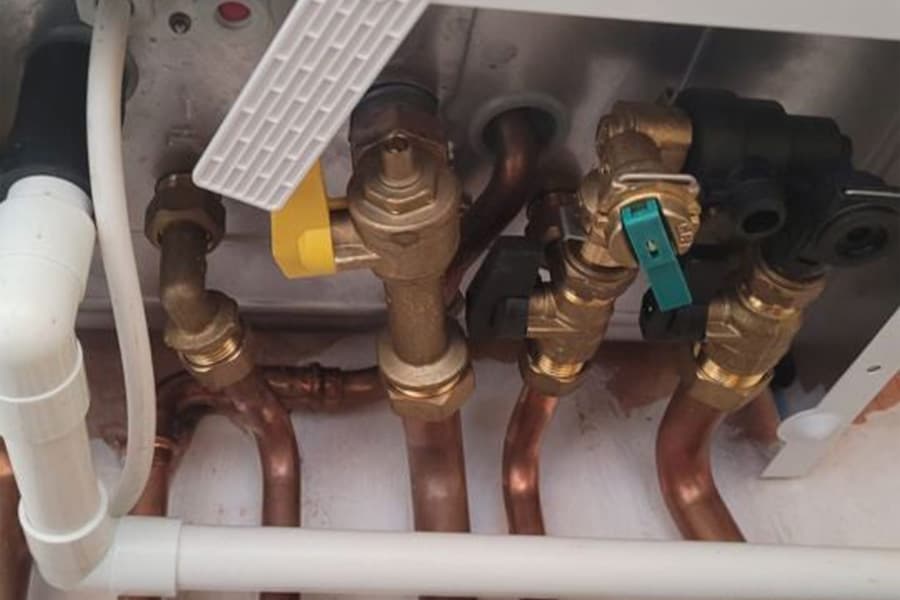09 October 2025
Low boiler pressure? Let’s get it sorted
Cold radiators, lukewarm showers, and a boiler that’s just not pulling its weight? Low boiler pressure could be the reason your heating has gone quiet. It’s a common hiccup—and we’re here to help you spot it, understand it, and get things flowing again.
How to spot low boiler pressure
Here’s what to look out for:
No heating or hot water.
Radiators not warming up properly.
Your boiler’s pressure gauge reading below 1 bar.
Fault codes – if your boiler pressure is too low, you’ll see a fault code on the display.
Tips from our experts: If your heating or hot water is just warm and not hot, boiler pressure is the first thing you should check.
Is low boiler pressure dangerous?
Nope. Low boiler pressure isn’t dangerous—but it is annoying. Especially when you’re trying to stay warm. Best to fix it before it ruins your day.
How to check your boiler pressure
Look at the pressure gauge on the front of your boiler. It often looks like a dial with red and green zones.
Can’t see a dial? Your pressure reading will be somewhere on your digital display (you may have to press a few buttons to get to it). Check your boiler manual for the information if you’re stuck.
What should my boiler pressure be?

When the heating is off - 1 bar.
When the heating is on - 1.5 - 2 bar.
When the pressure is too low - Below 1 bar.
When the pressure is too high - Above 2.75 bar (time to book an engineer).
Tips from our experts: If you have a dial-type pressure gauge, the needle should always be in the green section – simple!
Why is my boiler pressure low?
Usually, it’s one of two things:
1) You’ve bled your radiators recently
Bleeding your radiators releases trapped air and water from your heating system, dropping the pressure.
2) There’s a leak somewhere
Could be a tiny one. Check around radiators, pipes, and the boiler for signs of a leak (but don’t open the boiler yourself – that's a job for a Gas Safe Registered heating engineer).
Tips from our experts: If you can’t find the leak, book an engineer. It’ll save you time and stress.
How to re-pressurise your boiler
Always check your boiler manual first - every boiler model is different. Here’s how it’s usually done:
With a filling loop

An external filling loop looks like a flexible silver hose with a valve on each end (or sometimes just one). If you've never used it before it’s probably attached to the pipework underneath your boiler or with your boiler documents.
Here’s how to use it:
Switch off the boiler and let it cool.
If your filling loop isn’t connected, then you’ll need to do this. Connect one end to the mains water pipe and the other to the boiler pipework by hand tightening the nuts. Make sure both valves are closed when you do this.
If it’s not clear where it goes, it’s best to check your boiler manual or book an engineer to take a look and give you a few tips.
Now that everything is connected, open the valves—you’ll hear water flowing into the boiler.
Watch the pressure gauge and stop when pressure hits 1.5 bar.
Close the valves.
Switch the boiler back on (and press reset if needed).
Remove the loop and store it safely.
With a filling key (internal loop)

Most internal filling loops look like a built-in pipe underneath the boiler with two valves. One valve connects to the boiler and one to the mains water supply.
When your boiler pressure drops you can open these valves to let water into the system and top up the pressure.
Some combi boilers have a handy lever you can pull to let water in (like the image above) and release to stop the water when everything is topped up.
Worcester Bosch boilers have a slightly different system, which involves a filling key.

Here’s how to use them:
Switch off the boiler and let it cool.
Find the tray underneath and locate the key and the key slot (your boiler manual will help you find it).
Insert the key into the slot so it lines up with the open position, which is labelled with an open padlock.
Turn the key clockwise so it lines up with the closed padlock.
There will be a square nut next to the key slot. Turn this anticlockwise to let the water in.
Watch the pressure gauge and stop when it reaches 1.5 bar.
Tighten the nut again and unlock the key. Remove the key and store it safely.
Switch the boiler back on (and press reset if needed).
How often should you re-pressurise your boiler?
Only when the pressure drops. But check it every few weeks to stay ahead. If you’re topping it up often, there’s probably a leak—get it checked.
Boiler pressure still low? Just Ding it
If your boiler pressure won’t behave and you suspect a leak, it’s time to call in a Gas Safe Registered engineer. With Ding, you can book one in minutes. Clear pricing, fast availability, and access to expert engineers for £5 a month.
Book your job today. Just Ding it.
Written by:

Martin Garbutt
Head of Technical
Martin has more than 30 years' experience in the gas industry working in all sorts of roles; from gas regulators to the private sector.
At Ding, he makes sure the technical information we share in the field and online is up-to-date and accurate. That includes helping to write helpful articles like this one.
Whatever your job—just Ding it.
Become a member today
For just £5/month and get direct access to trusted plumbers, electricians, and gas engineers—ready to tackle your immediate and future repairs.
Need something else?

Heating guides
Didn't find what you were looking for? We've got more boiler and heating guides straight from our experts.

Boiler repairs
Boilers and DIY don't mix. If you need a repair, check out our job list and pricing.